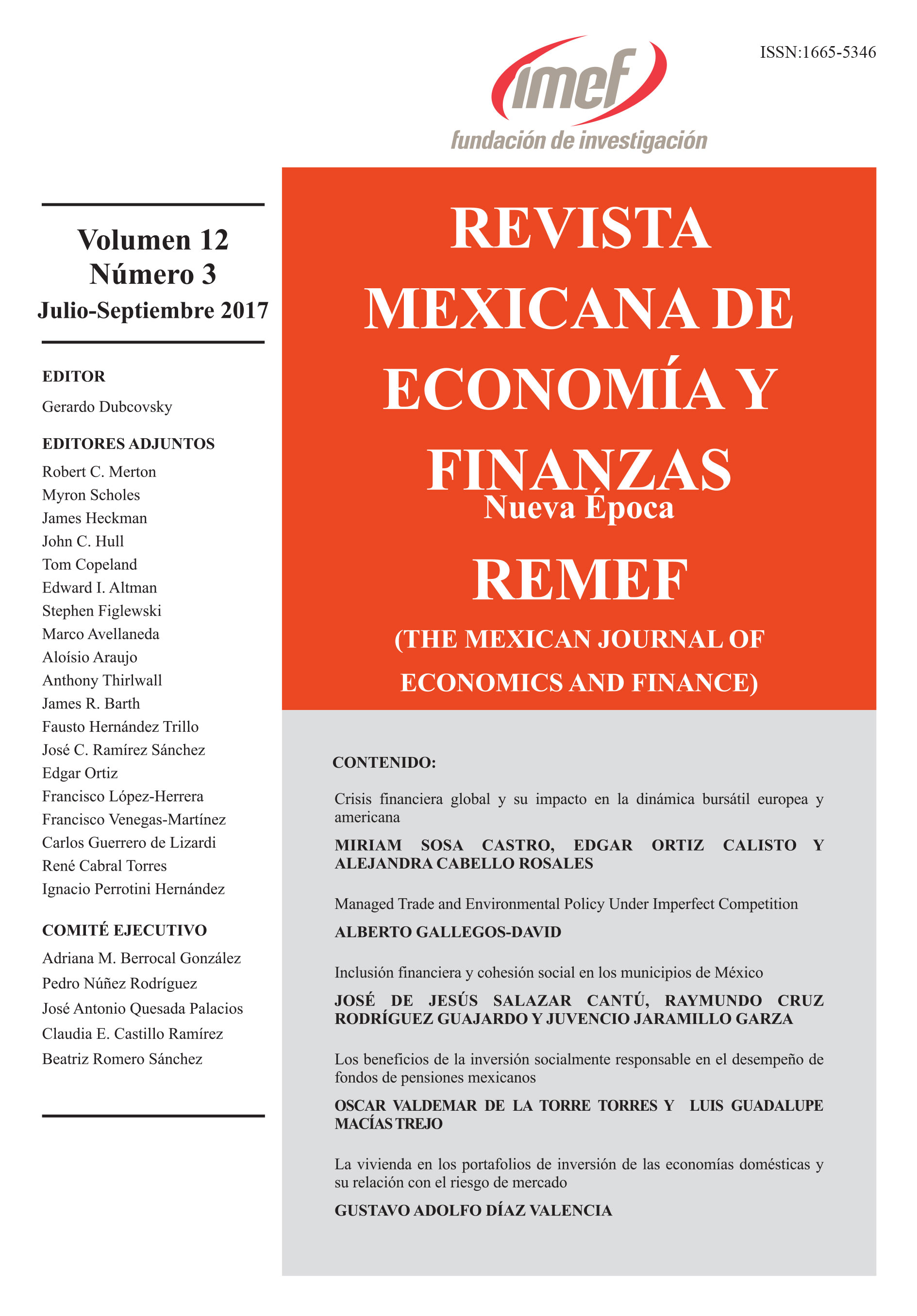Financial inclusion and social cohesion in Mexican municipalities
DOI:
https://doi.org/10.21919/remef.v12i3.96Abstract
The objective of this study is to prove the effect of financial inclusion on the level of social cohesion in Mexican municipalities. The methodology led to the elaboration of two financial inclusion indexes and the estimation of probit models, based on 2010 data. The results statistically prove the non-linear, bell-shaped relation between financial inclusion and social cohesion in Mexican municipalities, and allow to observe the existing gap between inclusion levels and those that would maximize the probability of reaching a high social cohesion at a municipal level. The main limitations of the investigation were the absence of a consolidated theory regarding the analyzed phenomenon, and the lack of information for some of the variables that were considered in the estimation. This study is the first one to elaborate on the relation between financial inclusion and social cohesion at a municipal level for any country, two variables that are present in the Mexican government's current plans. Financial inclusion also means social inclusion for the municipalities, so the consolidation of this strategy seems promising for the Mexican people.Downloads
Download data is not yet available.
Metrics
Metrics Loading ...
Published
2017-08-30
How to Cite
Salazar Cantú, J. de J., Rodríguez Guajardo, R. C., & Jaramillo Garza, J. (2017). Financial inclusion and social cohesion in Mexican municipalities. The Mexican Journal of Economics and Finance, 12(3). https://doi.org/10.21919/remef.v12i3.96
Issue
Section
Research and Review Articles
License
PlumX detalle de metricas








